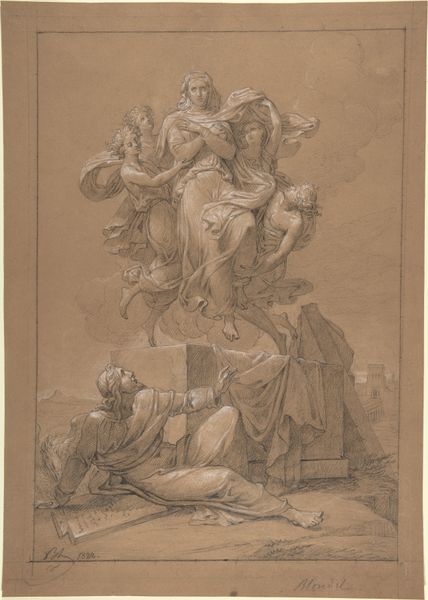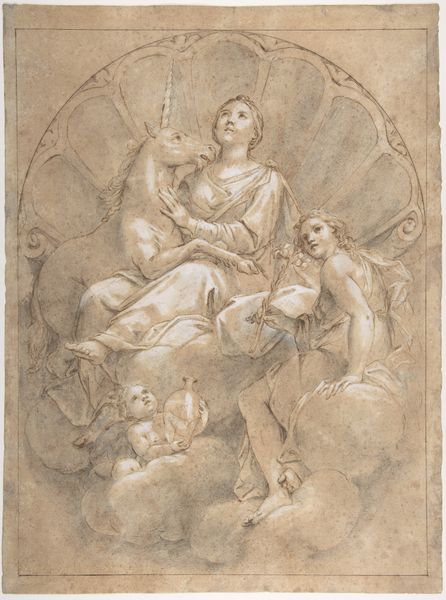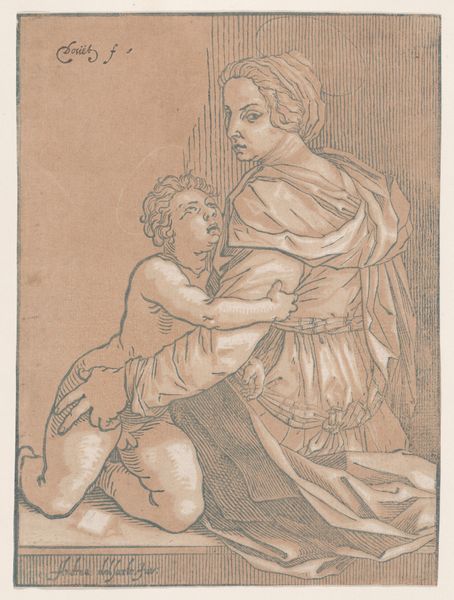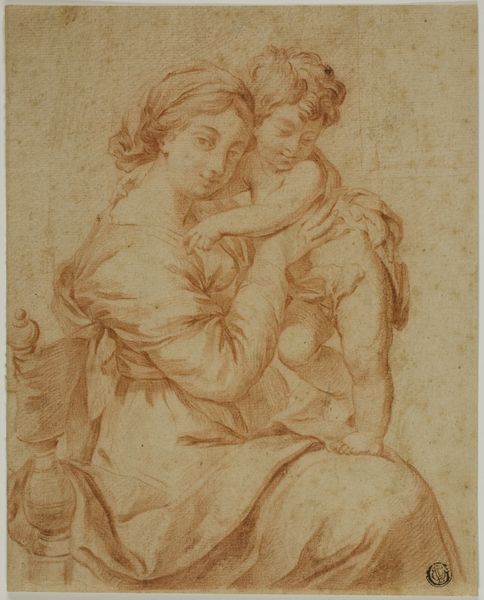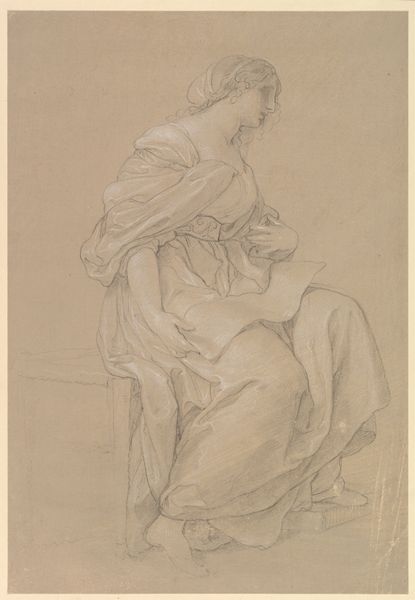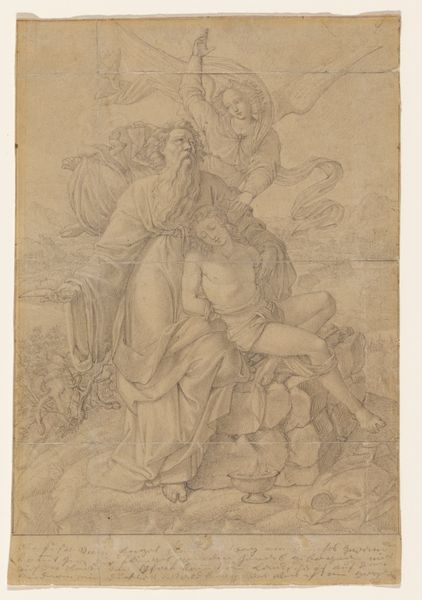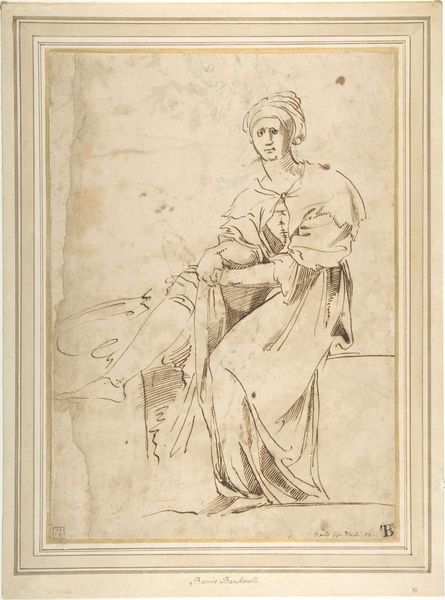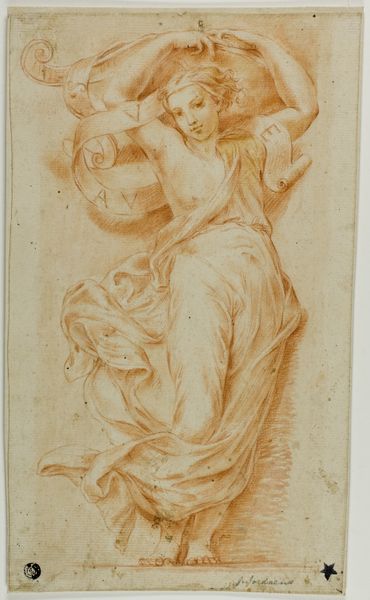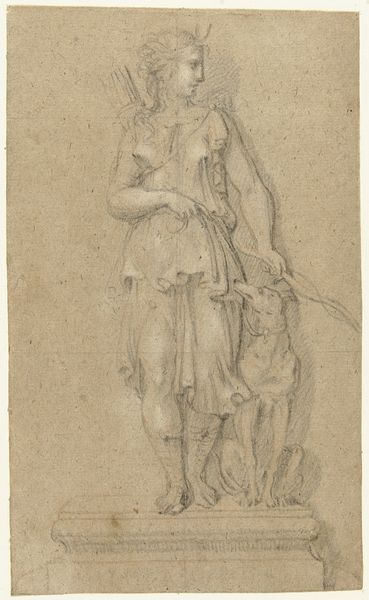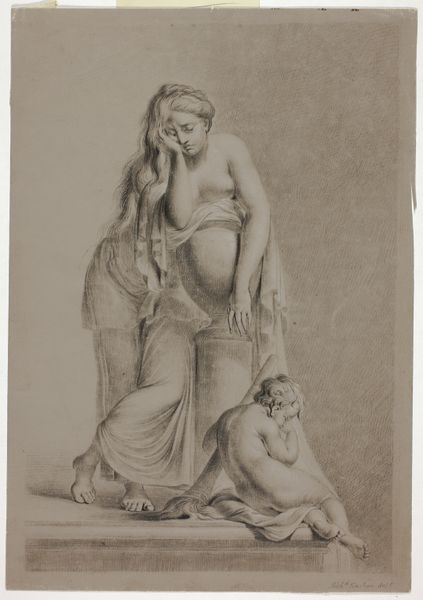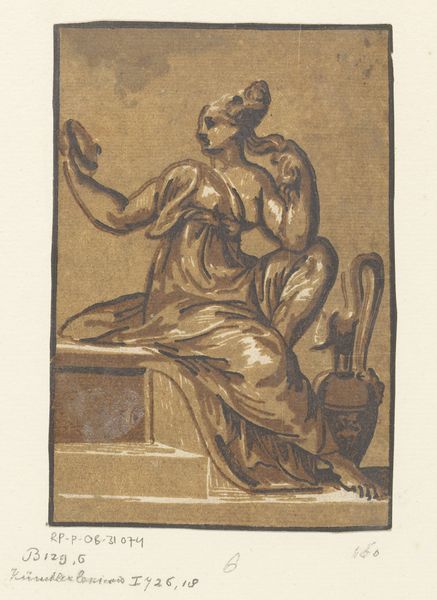
drawing, print, paper, pencil
#
drawing
#
allegory
#
narrative-art
# print
#
figuration
#
paper
#
pencil drawing
#
romanticism
#
pencil
#
history-painting
#
academic-art
Dimensions: 14 1/2 × 10 3/8 in. (36.8 × 26.4 cm)
Copyright: Public Domain
Curator: This is Merry-Joseph Blondel's "The Punishment of Niobe," a pencil drawing made between 1822 and 1828. It currently resides at the Metropolitan Museum of Art. Editor: It's intensely melancholic. The draping fabric and soft rendering create a sense of oppressive stillness. There is an undeniable focus on mourning. Curator: Absolutely. The story of Niobe, from Greek mythology, is steeped in themes of hubris, loss, and divine retribution. Niobe, a queen with fourteen children, dared to compare herself to the goddess Leto, who had only two. Editor: I see the bow of Apollo immediately. Blondel includes that as well as what seem to be other arrows raining down? I'm struck by the loaded nature of the arrows as a symbol of both divine power and the utter vulnerability of mortals who dare defy it. Curator: Yes, Apollo and Artemis, Leto's children, exacted a brutal revenge, slaying all of Niobe's offspring. Blondel captures the moment when Niobe clutches one of her dying daughters, a desperate, futile act of protection. This print functions not only as narrative but also as social commentary around class, entitlement, and shame. Niobe's tragedy stems from boasting, which leads to punishment, mirroring historical power dynamics of the era. Editor: The weight of history, social expectations, and the sheer inescapability of fate—it’s all etched into Niobe's anguished face. Notice, too, how Blondel uses light to emphasize the figures' idealized beauty, which juxtaposes harshly with their violent demise. And, in terms of iconography, Niobe herself, in later centuries, came to be seen as a representation of maternal grief. Curator: Indeed. The artwork underscores how mythology reflects broader anxieties around power, gender roles, and social hierarchies. Ultimately, Niobe's punishment reminds us that transgression always carries a price. Editor: Yes, Blondel's study urges us to acknowledge that these timeless visual motifs about defiance and consequence—hubris and revenge—continue to shape our modern discourse.
Comments
No comments
Be the first to comment and join the conversation on the ultimate creative platform.

